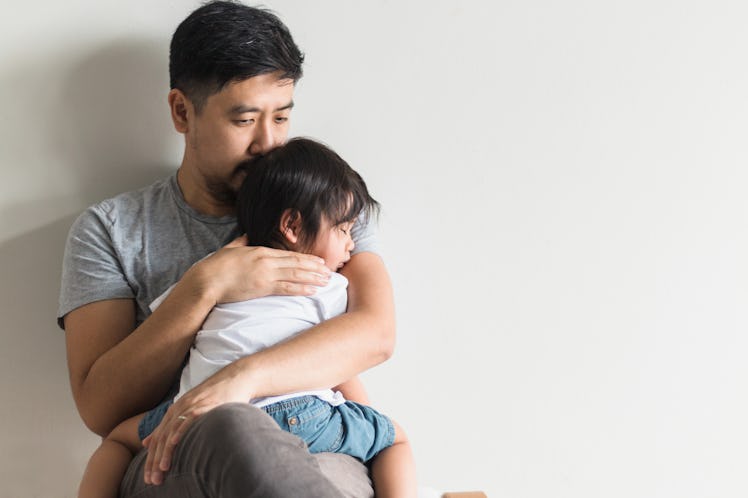How Do Babies And Kids Get RSV?
Good hand-washing is key to prevent transmission.

In recent weeks, health systems nationwide have reported an unusual number of cases of RSV, or respiratory syncytial virus, a common viral infection that can pose a serious threat to young children and infants. So how do babies get RSV, and how can you avoid the disease? Here’s what parents need to know.
How Babies Get RSV
RSV is notable for its ease of transmission. Unlike most winter viruses, RSV can live on surfaces for as long as 30 minutes — a feature of its incredibly large size, says Rabia Agha, MD, director of the pediatric infectious diseases division at Maimonides Children’s Hospital in New York. Whereas small droplets of viruses like COVID dissipate into the air, heavier RSV particles — about ten times the size of larger COVID particles — are more likely to sink down onto surfaces like tables and toys.
That doesn’t mean RSV can’t also spread in the air. Coughing, sneezing, and talking can also spread RSV via droplets, as is more common with COVID. Social distancing and masks are your best friends for all respiratory illnesses, RSV included.
Daycare centers where younger kids gather should be extra diligent about wiping down surfaces and washing hands this fall, Agha says. But even if your young kids are staying at home, they’re still at risk. Older children with mild symptoms often bring RSV home, where it can do more damage to babies and infants. It’s a good idea to make sure your school-aged kids wash their hands immediately whenever they return home.
RSV in Infants and Older Children
In most cases, RSV causes cold-like symptoms. In fact, most children have had RSV by the time they turn 2. But for infants under 1 and children with underlying cardiac, immune, or respiratory conditions, RSV can cause more serious illnesses, including bronchitis and pneumonia. Each year, about 58,000 people are hospitalized due to RSV, according to the Centers for Disease Control and Prevention. Between 100 and 500 children younger than age 5 die of the disease each year.
If you do have a young kid, RSV is easy to keep an eye out for, and routine testing isn’t generally recommended for little ones more than 6 weeks old. RSV symptoms can look a lot like COVID symptoms, so parents already watching for indicators such as runny noses, fevers, coughs, sore throats, and shortness of breath are already set when it comes to vigilance. If any of these symptoms do arise, doctors recommend avoiding close contact with infants, monitoring symptoms as you would normally, and getting tested.
Though the race for an RSV vaccine is underway, Agha says that when it comes to protection, “Good handwashing is very important.” So, get scrubbing, and don’t stop until next summer.
This article was originally published on